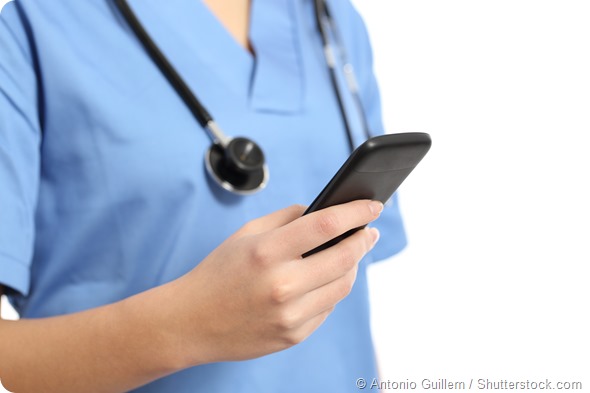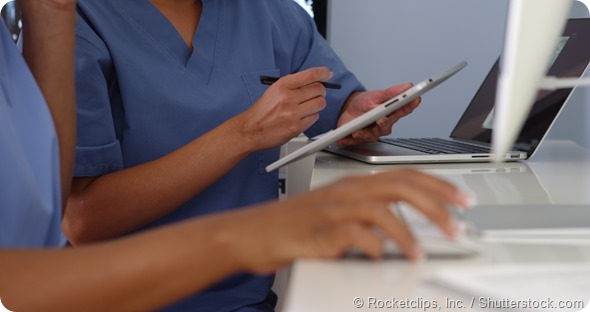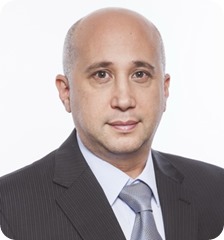Sponsored Content by iMDsoftFeb 8 2016
What are the main advantages of capturing observations using mobile devices rather than on paper?
Replacing paper with technology has significant safety ramifications. Using a mobile device for electronic observations increases the accuracy of documentation and score calculations.
More precise early warning scores enable early identification of potential patient deterioration. As a result of timely intervention, hospitals can reduce complications and length of stay. Additionally, nurses spend less time on documentation, freeing up time that can be spent on patient care.
Automatic calculation of early warning scores is particularly useful when a patient is on an individual treatment plan. In this scenario, default values may deviate from the norm, and the risk of error increases. Having this process in place guarantees compliance in all cases.

Please can you give a brief introduction to iMDsoft’s new mobile electronic observation solution?
MetaVision SafeTrack™ is a mobile electronic observation system that collects vital signs and nursing observations at the bedside, automatically calculates early warning scores (EWS), and provides options for immediate escalations to relevant caregivers.
Nurses have a wide range of assessment and screening options, including VTE, dementia, MUST, MRSA and more, and automatic calculation of fluid balance. The system also provides smart alerts for changes in patient condition, enabling detection of risk for lethal conditions such as sepsis and AKI.
How do automated Modified Early Warning Score (MEWS) calculations and escalations alert clinical teams to the need for intervention?
When a patient's early warning score goes up, MetaVision SafeTrack provides recommendations about increasing the frequency of observations and escalating the patient to the relevant caregiver, depending on the score. Each hospital can determine what the trigger point should be for these recommendations.
Doctors, senior nurses, administrators, and outreach teams define which patients and data they need to access. They get up-to-date clinical and location information, enabling them to respond immediately. Graphs of patient trends help them see at a glance how their patients are progressing.
How does MetaVision SafeTrack™ compare to other options on the market?
- MetaVision SafeTrack is much more flexible than the standard EWS system. For example, many different MEWS scores are supported, including Adult (MEWS), Child (PEWS), Obstetrics (MEOWS), Cardiac, Cancer Care, and Trauma & Orthopaedic.
- University Hospital Southampton NHS Foundation Trust (UHS) is working with 12 different MEWS scores and MetaVision SafeTrack will support them all. Scores can also be adjusted for individual patients as the need arises. In contrast to many systems, hospitals can decide which scores, reports and smart alerts to include.
- Our smart alert functionality is also unique. Even when clinicians are not at the bedside, our rule-based engine combines the latest observations with data from labs and other systems, enabling monitoring of trends and conditions that require attention. This kind of data integration is another strength of MetaVision SafeTrack, which seamlessly interfaces with hospital systems such as PAS and EPR as well as any bedside device.
- Unlike other e-observations systems, which are designed as mobile apps, our system is based on the MetaVision EPR platform. This means that the system can expand to include additional functionality, such as nursing documentation, doctor documentation and medication management, all the way to a hospital-wide electronic patient record.
What were the main challenges in developing this mobile solution?
MetaVision SafeTrack is a mobile front to the MetaVision EPR, which we have been developing for the past 20 years. Our main challenge was how to adapt the rich functionality that is designed for desktops for the small screens of a smartphone.
We put great emphasis on the usability of the application and had to abandon many design principles that we are accustomed to following but that do not work well in the mobile world.
At what stage of development is MetaVision SafeTrack™ at?
MetaVision SafeTrack has been released, and is already being implemented at UHS, and will eventually be used at all 1237 of its general ward Level 1 beds. Using mobile devices across 57 wards, 3,000 nurses and midwives will replace paper with MetaVision SafeTrack to capture observations.
The system is continually being enhanced in response to customer feedback and changing market requirements.
What feedback have you had from hospitals using MetaVision SafeTrack™ so far?
Initial feedback from nurses on the wards has been very positive to date. User adoption was fast, with a short learning curve. MetaVision SafeTrack's flexible design allowed us to mimic the paper form used by nurses, so the look and feel was quite familiar to them when they first opened the system. It was very encouraging to see nurses start using the app with basically zero training.
In what ways do iMDsoft plan to develop MetaVision SafeTrack™ moving forwards?
We will continue to include additional functionality from the MetaVision EPR in MetaVision SafeTrack. We plan to add medication management and doctor orders in upcoming releases.
In addition, we plan to increase the flexibility of the system even more by introducing separate application layouts that can be configured per ward, discipline, or even specific users.

What role do you think technology will play in shaping clinical observations in the future?
I think we are now in the "documentation period" where the hospital's main goal is to get rid of paper and have everything digitally documented.
As we head toward the future, the emphasis will shift toward improving outcomes. Clinical observations systems will have to integrate with medical devices and predictive analysis algorithms and track the patient condition in real time.
This type of workflow can already be found in critical care and I believe it will make its way to general care as technology advances and patients become more acute.
Where can readers find more information?
- You can learn more about MetaVision SafeTrack on our website.
- Find out more about MetaVision SafeTrack at University Hospital Southampton.
About Eran David
Eran David, Chief Technology Officer at iMDsoft, is responsible for directing technology strategy. He brings both technical expertise and business experience to this role. Eran has led development of the MetaVision Suite since its first release, and has architected many of its key components.
His background includes software engineering, and he holds a B.A. in accountancy and information systems, a M.Sc. in computer science from Clark University, and an M.B.A from Heriot-Watt University.